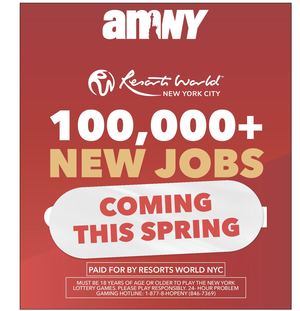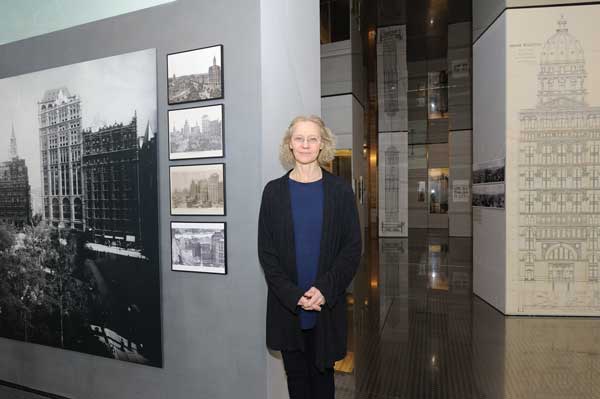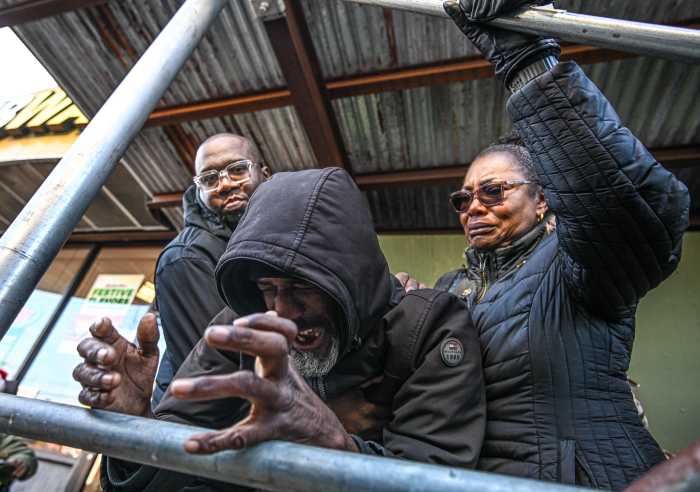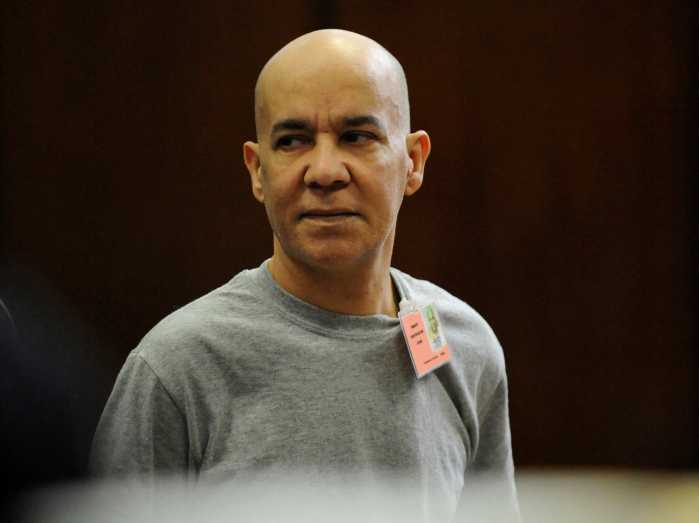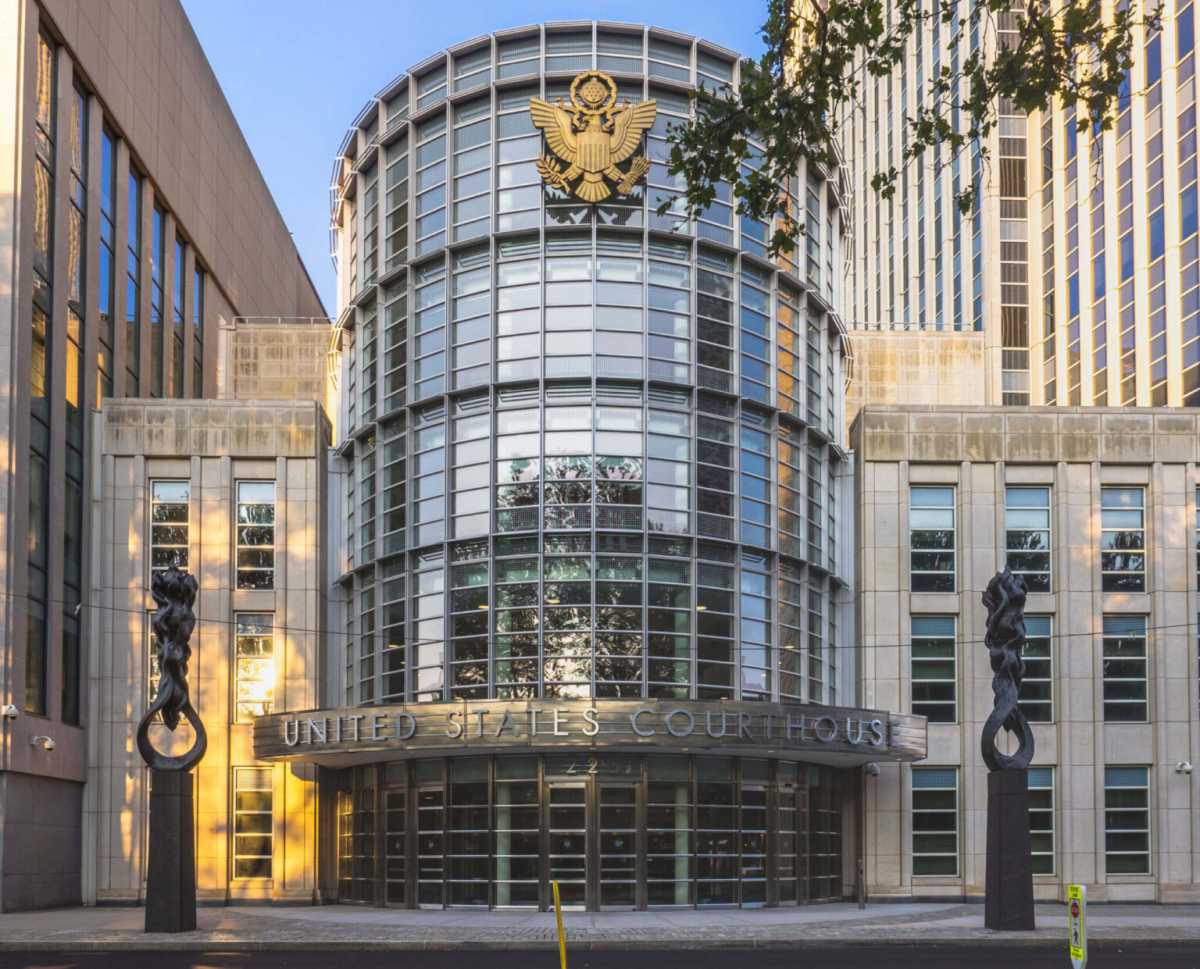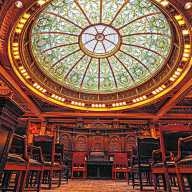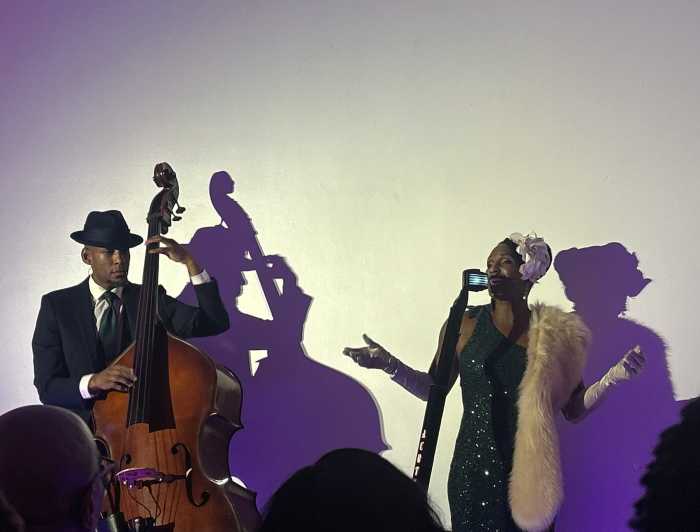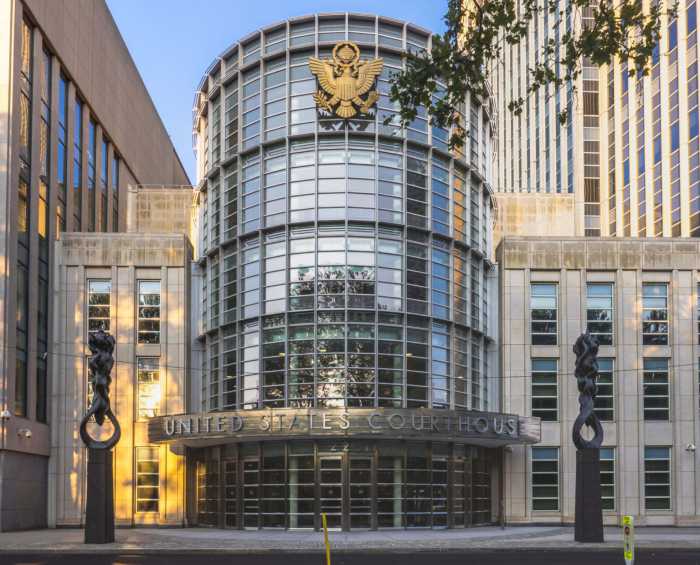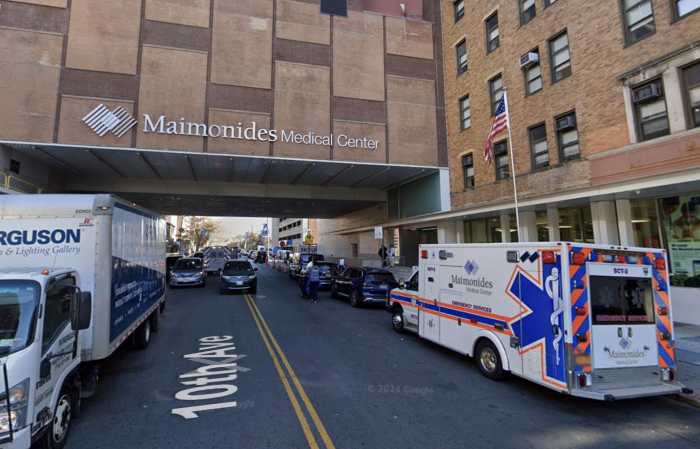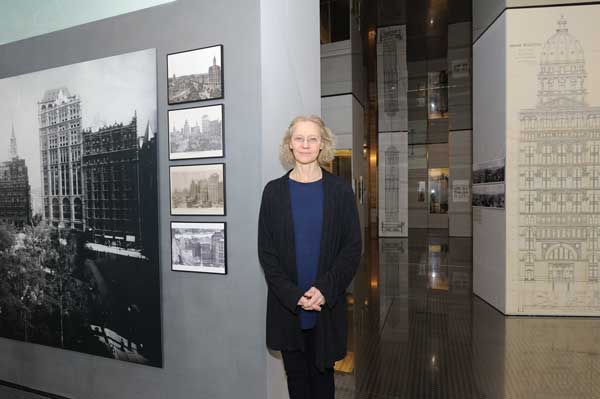 [/media-credit]
[/media-credit]
Franklin’s presence on that particular corner is because it was once called Printing House Square. From the 1840s through the early 20th century, New York City’s great newspapers had headquarters there, across from City Hall and near the courthouses and the city’s main post office. Buildings sheltering related businesses and job printers stretched down the adjoining streets. Park Row was once known as “newspaper row” because so many important newspapers and wire services had offices there.
An exhibit that opened on Feb. 29 at the Skyscraper Museum in Battery Park City chronicles the architectural and technological revolutions that transformed the New York City newspaper industry between the 1870s and the 1930s. Historical prints, films, architectural renderings, photographs, typesetting equipment and newspapers document the transformation.
Before 1870, newspapers were in Lower Manhattan but they were in low-rise buildings, according to Carol Willis, director of the Skyscraper Museum and the curator of the “News PAPER Spires” exhibit. “In fact,” she said, “there was nothing in Lower Manhattan taller than six stories except for the spires of Trinity Church and St. Paul’s Chapel.”
The Tribune building, started in 1873 and finished in 1875, changed that picture. It was on Nassau Street and was designed by one of the foremost architects of that day, Richard Morris Hunt. Originally 10 stories tall, it ended up being 11 stories with a clock tower.
The skyscrapers of Newspaper Row were the first elevator office buildings, said Willis. “The Tribune was a masonry building,” she said. “It would have used some cast iron in interior columns in order to save space but the building was held up by masonry piers. The Tribune was the tallest building in the city except for the spire of Trinity Church.”
The “News PAPER Spires” show looks at this and other newspaper skyscrapers as vertical urban factories. The business offices would have been on the ground floor. “That’s where people came in and took advertisements,” said Willis. “Those were handsome quarters that showed the status of the newspaper. The editorial rooms were high, the presses were low, but the other workers who were high were the compositors who were making plates out of fonts in a composing stick until the linotype machine was invented in 1886 and mechanized typesetting.”
After the Tribune building, the next newspaper skyscraper on Printing House Square belonged to The New York Times and was finished in 1889. “They tore down their old building and built a new one on the foundations of the old one while the printing operations were conducted every day without a single break,” Willis said. “The Times building was designed by George B. Post and was made out of granite.”
The New York Times building was 11 stories with a mansard roof, which was later removed in order to add several stories. Eventually, the building was 15 stories high. It is still standing at 41 Park Row and now belongs to Pace University.
The most conspicuous of the newspaper headquarters was the building that opened on Dec. 10, 1890 at the corner of Park Row and now-closed Frankfort Street to house Joseph Pulitzer’s newspaper, the “World.” Constructed of red sandstone, brick and terra cotta trimmed with red and gray granite, it was also designed by George B. Post.
“It was an ornate building on its outside, which emphasized the masonry character of the building,” said Willis. “It looked like a masonry building, but contained within its walls was advanced technology that incorporated metal construction. It was called metal cage construction. It was a hybrid technique that embedded the metal within the stone wall.”
The building was 309 feet tall from the base to the top of a dome, which had an observation deck. Just as people go to the top of the Empire State Building today, people went to the observation deck of the World to look at the city, and also to look at the newspaper’s state-of-the-art printing presses. The “News PAPER Spires” exhibit opens with a film made from stitched-together still photographs taken from the World’s observation deck.
The New York Times left Newspaper Row in 1905 to move to a 25-story-tall skyscraper between West 42nd and West 43rd Streets on what is now called Times Square. It is now cloaked in LED signs and is used on New Year’s Eve as the place from which a ball drops to mark the changing year.
Pace University now stands where the Tribune building once stood. The World building was demolished in 1955 to make room for the expanded automobile entrance to the Brooklyn Bridge. The copper box from the cornerstone of the World building is on display in the exhibit. It contained large drawings of the building, some of which have been reproduced and are also on display. The cornerstone box now belongs to Columbia University and is on loan from its rare books library.
The cornerstone box, being unique, is one of the most unusual items in “News PAPER Spires,” — but another unusual item would have been far from unique in its time. It would have been commonplace.
Linotype machines for setting type were gradually replaced by the 1970s when lead printing plates were replaced by a cold-type process.
“Every page of a newspaper had to be printed from cylinder plates of lead,” said Willis, “and the one on display in the exhibit is the only one that was left at The New York Times annex at 229 W. 43rd St. The date was June 19, 1978. That was a couple of weeks before they stopped printing with lead. This plate was found in a closet in 1997.”
Willis said that the reason she did the show was to explore the first chapters of the skyscraper in New York City. “Newspaper buildings were a way to get into that material that had the additional interest for me of being able to go inside the buildings through photographs that survived when newspapers published things about themselves. That is not possible with office buildings. Especially with the World building, we were able to reconstruct what happened on every level. When they opened a new building, newspapers gave detailed accounts of how the building functioned. These were among the most modern buildings of their day.”
The “News PAPER Spires” exhibit will be at the Skyscraper Museum, 39 Battery Place, through the middle of July. Lectures and walking tours will supplement the exhibit. The museum is open from noon to 6 p.m., Wednesdays through Sundays. For more information, go to www.skyscraper.org.
